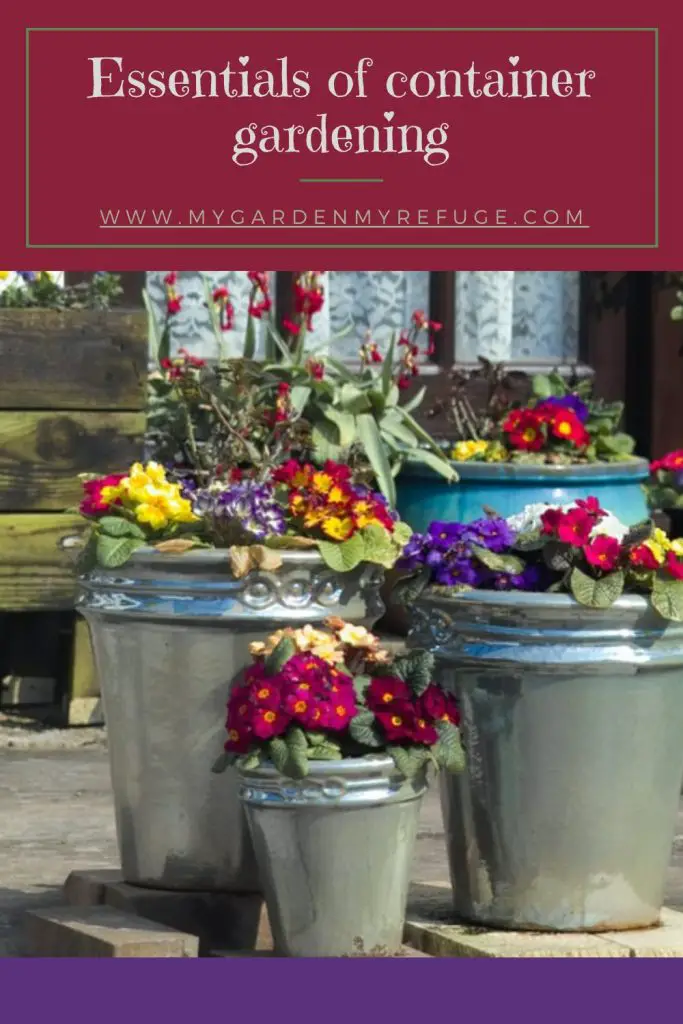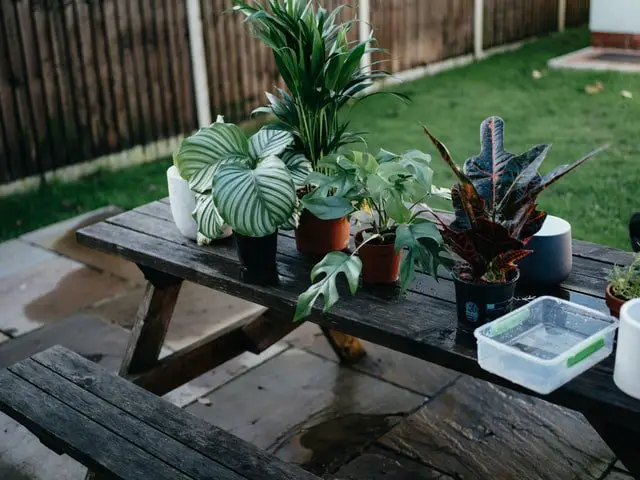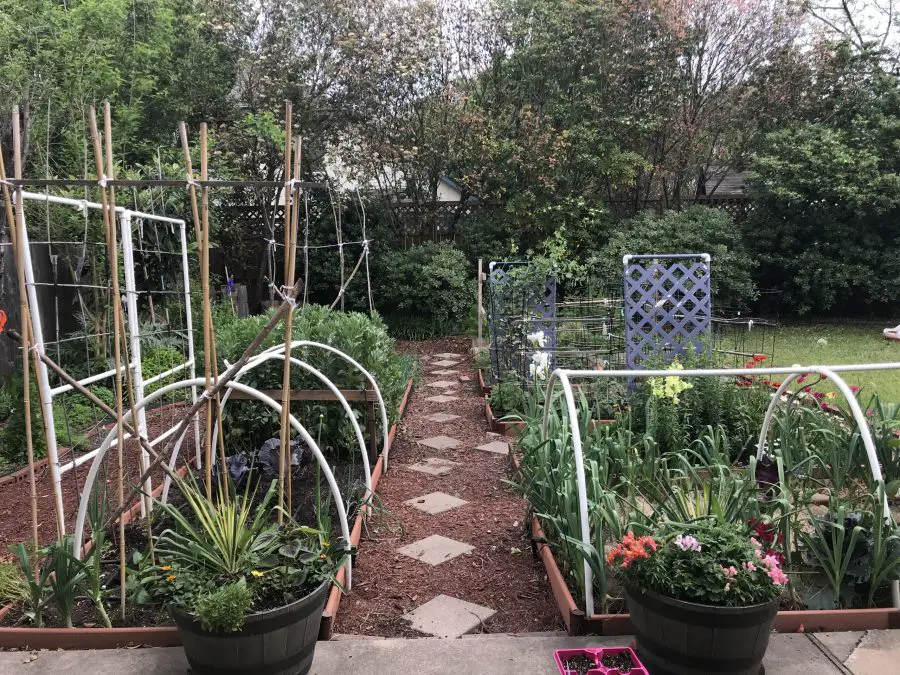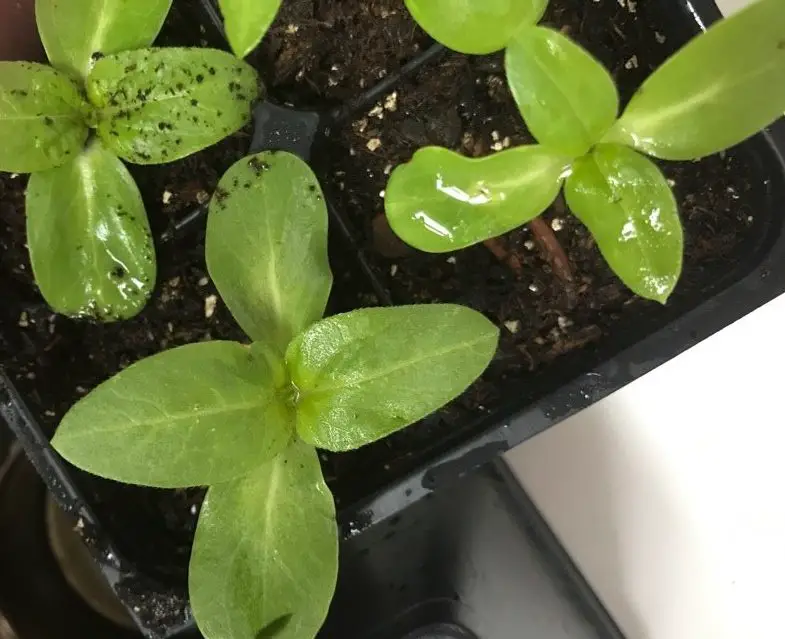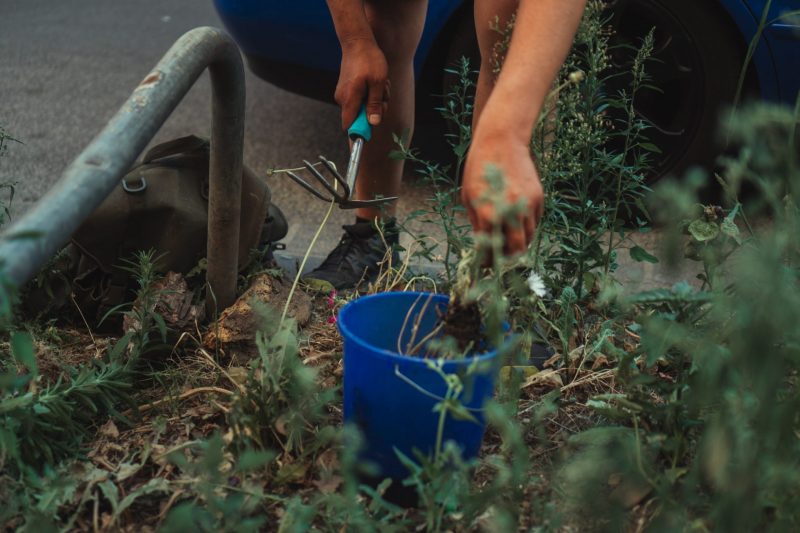Disclaimer: This post may contain affiliate links. Please read my full disclaimer here.
What is container gardening?
Container gardening is simply the practice of growing plants in an enclosed container. This method is very much suited to apartment dwellers and people with limited space. If you are new to gardening, you may think that raised beds could be considered large containers. The reality is there is a fundamental distinction between the two. While they both contain the plants, raised beds are, most of the time, bottomless and set directly on the ground. Therefore, raised beds have better drainage than pots.
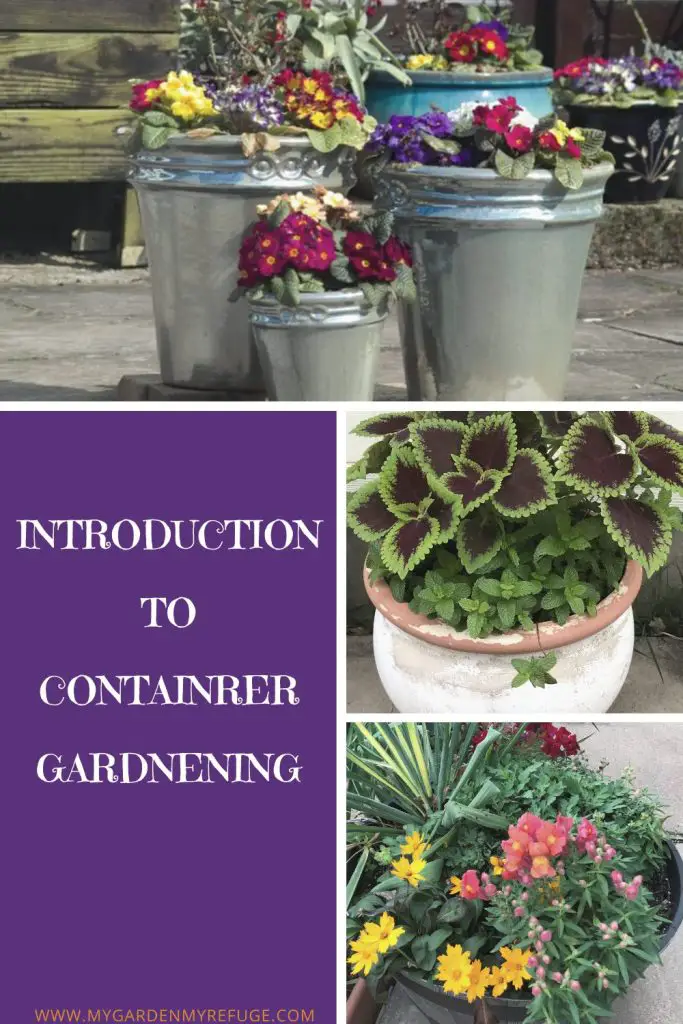
What can you grow in containers?
Anything can grow in containers as long as the growing requirements are available. Herbs and annual flowers are the easiest and the most common in container gardens. Many vegetables are also suited for containers with some extra attention. When it comes to fruits, berries are on top of the list. Growing some fruit trees in containers is possible such as citrus and dwarf varieties.
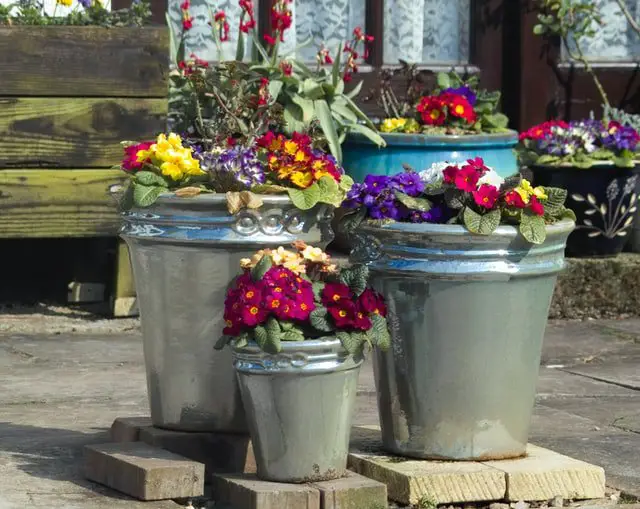
How to choose the right pot?
The right size
The container size depends on the kind of plants you are growing in it. For example, a tomato plant will need at least a five-gallon size container, while peppers will do fine in a three-gallon pot. And most annual flowers will grow well in a one-gallon container.
To choose the right container size, consider the plant’s final size and the depth of its roots. Plants with shallow root systems, such as lettuce and pansies, do not need a deep pot.
The right material
With all the new technologies, companies are trying to provide various choices to accommodate the consumer. In addition to the traditional clay and stone, there are many materials today. So the critical criteria to look for is how much moisture the material retains. For example, Clay pots are porous and lose water the fastest. If you must have natural material, you may consider glazed pots. Resin containers are another excellent choice for their lighter weight and sturdiness.
The right soil
Avoid using native soil in your containers. It is very dense and heavy and will smother the plant’s roots. Instead, always use potting soil because it is designed specifically for containers. It should be light, pliable, rich in organic matter, and sometimes reinforced with supplemental nutrients. You can also make your own to save some money by mixing equal parts of compost, peat moss, and perlite.
Good drainage
Many get carried away by the aesthetics of the pot and forget to check or make drainage holes. These are the holes you usually find at the bottom of the pot. Most of the time, big and pretty planters do not have predrilled holes, so make sure to make them before planting.
Drainage holes allow extra water to seep through the pot. Otherwise, it will pool at the bottom, saturating the soil and causing it to go anaerobic. Eventually, that will also cause root rot and kill the plants. It is best to make holes on the bottom sides instead of the base for better water escape.
How to make a hole on a flowerpot?
To make drainage holes in a plastic pot, use a metal skewer you would have heated and insert it through. Large resin pots usually come with imprinted holes g ou would break by hammering in a screwdriver. You can also use a drill to make the holes.
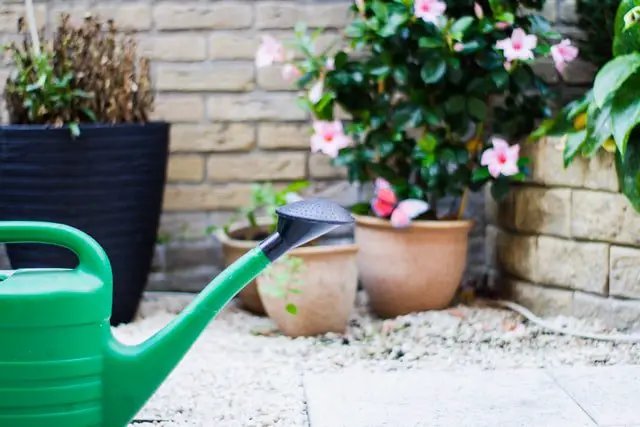
Proper watering schedule
Regular watering is most important to keep potted plants happy. It is because the soil in the container dries out faster than you think. Besides the roots absorbing the water, evaporation is another way soil loses moisture. However, avoid sporadic watering and always check soil moisture levels beforehand.
There are two ways to check soil moisture. First, insert a finger into the soil, at least one inch and a half deep. If it comes out dry, then it is time to water. Another way is by lifting the pot and checking its weight. If it’s light, the soil is dry.
It is worth mentioning that pot size and color also matter regarding water retention. Small pots and black pots are quicker to heat up and dry out.
Proper fertilizing
The soil in the pots runs out of nutrients fast, especially when growing vegetables and flowering plants. As a solution, adding dry slow-release fertilizer to the soil before planting feeds the plants for a good time. Liquid fertilizer is a good supplemental application during the growing season.
Conclusion
Container gardening is in trend today, for it is relatively easy to maintain and relocate, but it does come with its perks. A container garden is more challenging to keep in warmer regions due to high temperatures and dry weather. On the other hand, plants’ root system is exposed to freezing temperatures in the cold areas, which may cause tremendous damage.
At last, whatever you choose will be well worth the effort you put into it. Gardening in all its forms is very healing and brings us closer to nature.
